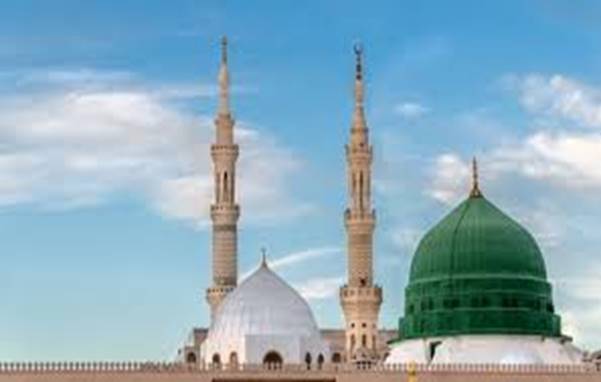
Green Dome
The Prophet’s Empowerment of the Youth
By Miriam Mohamed
Chicago, IL
When we reflect on the life of Prophet Muhammad, peace and blessings be upon him, we see a remarkable commitment to nurturing and empowering the youth of his time. He recognized their potential, valued their voices, and played a pivotal role in shaping their lives positively.
One inspiring example is the story of Zaid ibn Thabit, may Allah be pleased with him, who was just 13 years old when he approached the Prophet, peace and blessings be upon him, with a desire to participate in the Battle of Badr. Although his young age and physical capability meant he could not join the battle, the Prophet did not overlook his enthusiasm. Instead, he saw Zaid's potential for scholarship and encouraged him to study Hebrew and Syriac. This investment in Zaid’s education led to him becoming one of the Prophet’s trusted scribes and interpreters at a young age.
Zaid’s skills proved invaluable when, during the Battle of Yamamah, many of the Qur’an's memorizers were martyred. Fearing the loss of the Qur’an’s oral transmission, the first Caliph, Abu Bakr, may Allah be pleased with him, tasked Zaid with the crucial project of compiling the scattered Qur’anic texts into one book.
Zaid completed this monumental task efficiently, preserving the Qur’an for future generations. This highlights the Prophet's vision, peace and blessings be upon him, and trust in the youth’s potential, which yielded remarkable results.
Another example is Mus’ab ibn Umair, may Allah be pleased with him, who, despite his youth, was entrusted with a significant mission. Recognized for his intelligence and dedication, the Prophet, peace and blessings be upon him, appointed him as the ambassador to Yathrib (now Madinah) to teach Islam. Within a year, Mus’ab’s efforts led to every household in Madinah embracing Islam, demonstrating the profound impact and effectiveness of youthful leadership.
The Prophet’s, peace and blessings be upon him, approach to guiding the youth was deeply empathetic and understanding. For instance, when a young man approached him with a troubling request, the Prophet responded with compassion and gentle reasoning. Instead of condemnation, he engaged the young man in a thoughtful dialogue, leading to a change in his behavior. This approach not only addressed the immediate issue but also empowered the young man with the understanding and strength to make better choices.
The Prophet, peace and blessings be upon him, also demonstrated his care for the youth through personal encouragement and prayer. Abdullah ibn Abbas, may Allah be pleased with him, the Prophet’s young cousin, was known for his curiosity and dedication. The Prophet prayed for him, asking Allah to grant him understanding and wisdom in religion. This heartfelt prayer and guidance helped Abdullah become a distinguished scholar by the age of 13, highlighting how the Prophet’s support and affection nurtured young talent.
Prophet Muhammad, peace and blessings be upon him, exemplified the power of investing in and empowering the youth. He saw their potential, provided them with opportunities, and supported them with love and understanding. His approach serves as a timeless example for us today: by valuing, supporting, and trusting our young people, we can foster their growth and harness their potential to create a positive and impactful future.
Let us honor this legacy by actively engaging with and empowering the youth of today, recognizing them as the leaders and changemakers of tomorrow.
(Miriam Mohamed is a mother to seven children and a granny to two cats! She loves trying new things and learning cool facts. She has taught in an Islamic school setting, has experience assisting children with special needs, and enjoys volunteering and being a part of the community. Miriam lives in Chicago with her beautiful flowering cherry tree and big family.)

